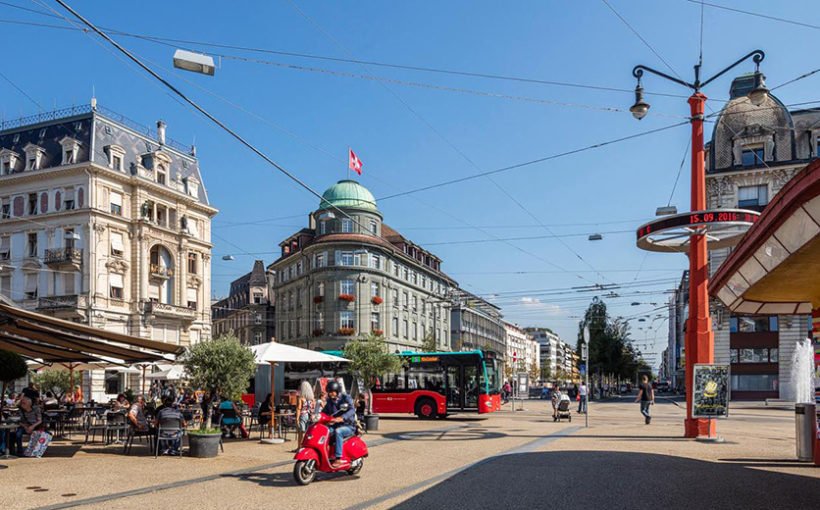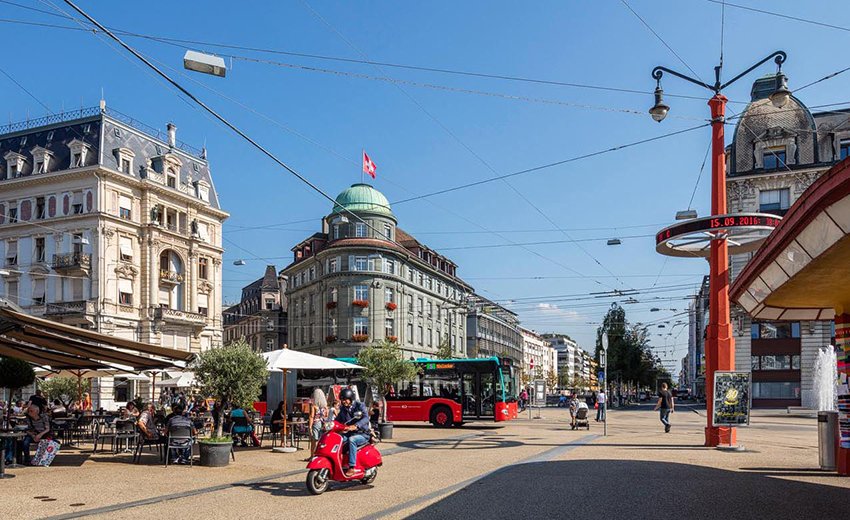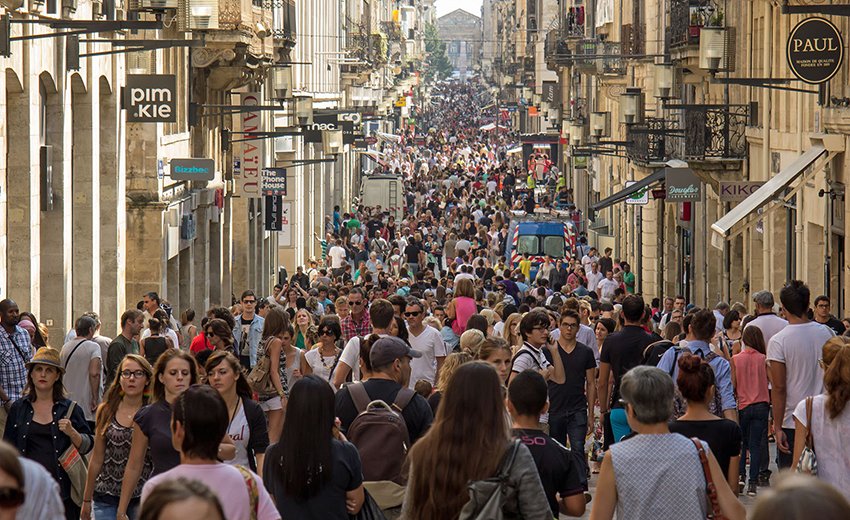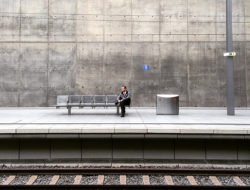Car-sharing services, self-service mopeds, bikes, scooters, public transport… The multiplication of means of travel prompts us to reconsider the public space. What if towns tried to slow things down, reinstating pedestrians to their rightful place?
A small town with 50,000 inhabitants in German-speaking Switzerland, has nothing to envy of larger cities. Since 2002, Bienne has transformed its central town square into an ‘exchange zone’ where all street users mingle: pedestrians, cyclists, cars and public transport all use and share the same area.
Exclusively motorised traffic is no more! The speed limit is 20 km/h, and parking is only allowed in a few designated areas. Pedestrians have priority over traffic and can use the entire area as long as they do not hinder traffic unnecessarily. This requires mutual respect among all users. And despite relatively frequent public transport, traffic continues to flow easily, even for buses.
Priority to the weakest
Is this storybook idealism? Walking is often the most forgotten aspect of public policy. Pedestrian zones are created, but a town’s ‘suitability for walking’, giving people the possibility and the will to walk, is not really considered. However, restoring walking to its rightful place in public spaces implies making it easy to move around. Installing rest areas, benches, and pocket gardens along the way would not only encourage gatherings and social bonding, but also enable people with reduced mobility to rest.
Some towns, such as Bordeaux, have taken a gamble by investing in excellent pedestrian facilities. Consequently, the 1250-metre-long rue Sainte-Catherine, in the Gironde region’s capital, is the longest pedestrian shopping street in Europe. And among the 12 projects that were part of the ‘Bordeaux 2030’ scheme, the town aims for all its services to be within a 15-minute walking or cycling distance. A vision that many towns would do well to follow as walking is an essential building block for a multimodal, sustainable town.
Tags: Bordeaux, Mobility, pedestrians, public space, walking











































